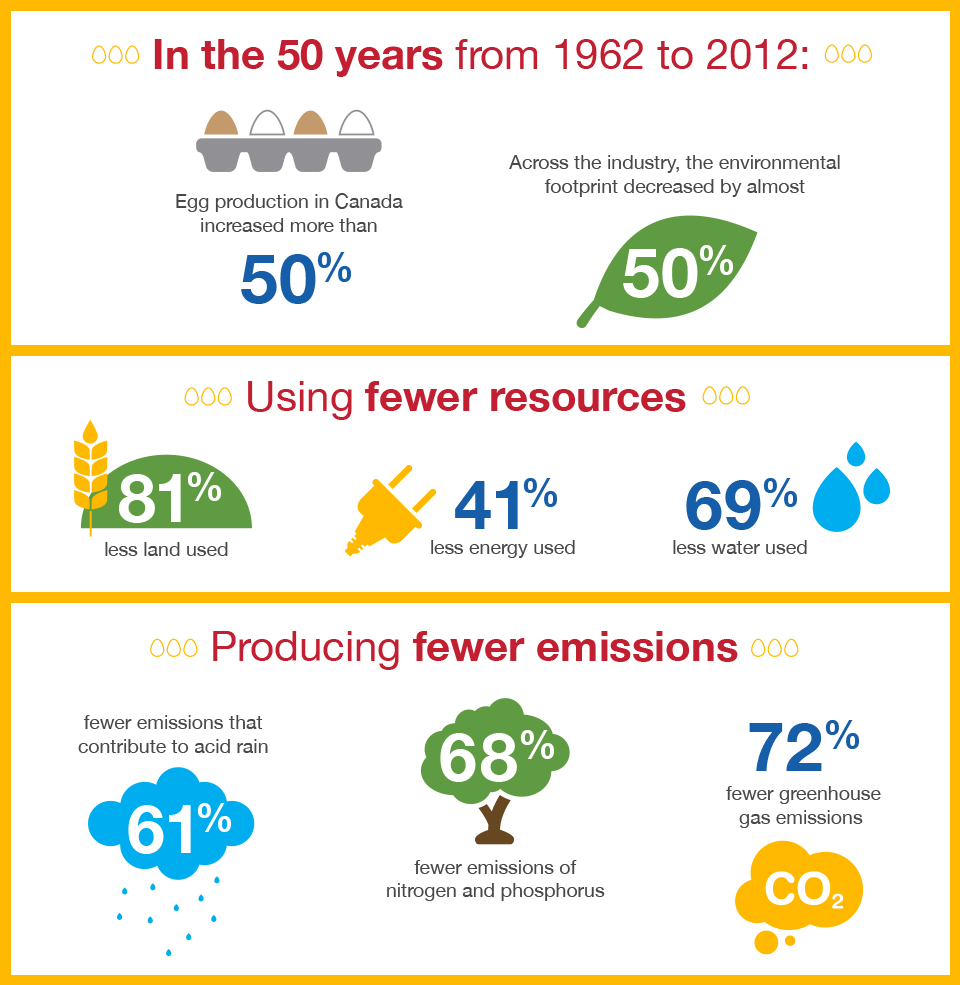
50 years growing, 50 years greening
By Egg Farmers of CanadaThe planet is warming at a rate unprecedented in the past 1,300 years, and the resulting harm to humanity could be catastrophic.¹ Climate change has become one of the greatest challenges of our era and every industry has a responsibility to tackle the problem head-on.
To reduce our environmental footprint while creating jobs for this generation and the next, we need to make more for less. We need to create more products and services while using less land, less water and fewer fossil fuels. If it sounds impossible? It is not. Greening and growing productivity can go hand-in-hand. The egg industry, after all, has been doing it for a half-century.
Over the past 50 years Canadian egg production has increased by 50% while the industry’s environmental footprint dropped by almost 50%. Our industry is leading the charge into a sustainable future.
Dr. Nathan Pelletier, EFC’s Chair in Sustainability is the man behind this revelation. He has modelled sustainability in over 100 agricultural supply chains and his latest study analyzes the shifting environmental effects of the Canadian egg industry over the past fifty years.
“This isn’t just about a single company or industry. We want to understand how sustainable we are across the value chain,” says Pelletier. It turns out the egg industry is a sustainability success story.
The study found:

“I knew going in that, at least at the farm level, we have seen advances in efficiency and productivity,” says Dr. Pelletier. “But the degree of efficiency gains surprised me… they were really impressive.” Over the past fifty years, the egg industry has produced 50% more eggs using less land, less energy and less water – in total a 50% drop in its environmental footprint – all while making hens healthier.
“This provides an example where growth and sustainability in an industry are not incompatible with improving environmental outcomes. It’s a great thing. The egg industry is taking sustainability seriously.”
What lessons can we draw from the egg industry’s experience as the rest of our economy goes green? Dr. Pelletier believes the answer is technology. He cites the contemporary example of the egg industry’s first net-zero layer barn. An Egg Farmers of Alberta project, the new facility aims to balance its energy inputs and outputs and achieve net-zero energy usage.”² If the project is a success the technology could be scaled up and implemented elsewhere in Canada.
“The question now is: how do we sustain and improve the egg industry’s performance in the future?” says Dr. Pelletier. “The industry is well positioned to continue making sustainability improvements. This study offers information that serves as a great basis for figuring out where to go from here.”
What do you think–where should our industry go from here? Did these results surprise you? Share this on Facebook and Twitter.